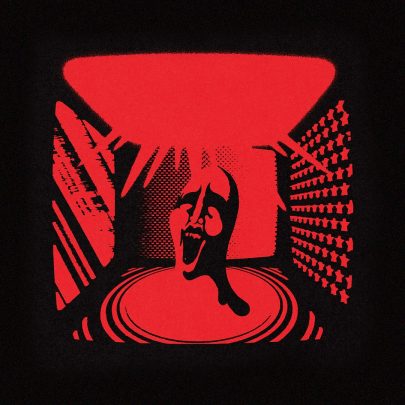May 29, 2015 Film & TV
Laurie’s character is called David Nix, and he is a world-weary type par excellence. He frowns a lot, as only a Laurie character can, too bored to vent the full virulence of his disdain. But here, late in the story, finally, Nix takes a moment to help our heroes understand just how very stupid they are for daring to believe that the human race is worth saving. The moment is quite a long one. So it’s a shame about the backlighting.
Nix is standing in a pool of shadow. The camera keeps changing viewpoints, allowing us to see that there’s a sandy desert island behind him on one side, and a brilliantly white city of soaring towers on the other. In other words, Nix, for the entirety of his big speech, is the hardest thing on the screen to look at. There’s symbolic potential in this, but also an invitation to a migraine.
The director of The Iron Giant, The Incredibles and Mission Impossible: Ghost Protocol, if you don’t know, is Brad Bird, and until now his name has been reason enough to see any film, no further questions asked. The Iron Giant and The Incredibles are classics, the less-well-known former even more than the latter, but it was his unexpectedly creative and nimble entry in the lumbering Mission: Impossible franchise that made Bird seem like the man who could spin cinematic straw into gold. It was his first live-action film, it arrived in the wake of the disastrous live-action debut of another Pixar director (Andrew Stanton’s John Carter), and hopes were not high. It was a cracker.
Tomorrowland is Bird’s first film since that one. It’s also a precious rarity in the current blockbuster landscape: a non-franchise film, a big budget adventure with an original, non-comic-book-inspired, non-fantasy-novel-adaptation story. Hopes have been very high indeed.
Hope, as it turns out, is Tomorrowland‘s theme. Its story involves jetpacks, robot assassins, transdimensional travel, space ships, George Clooney, Jules Verne, and at least three different brands of planetary disaster, but at its core it’s very simple: it’s about the power of self-fulfilling prophecies and the value of informed optimism. Clooney plays an embittered former optimist called Frank, a bright-eyed science nerd who grew up and discovered middle age. Britt Robertson (Under the Dome) plays a current optimist called Casey, a bright-eyed science nerd who has yet to grow up and wants Frank to pull out of his funk.
Casey is all about getting people to pull out of funks. An early sequence shows her sitting bolt upright in school, hand raised to ask a question, as a succession of teachers explain that the climate may destroy us all at any moment, nuclear Armageddon may destroy us all at any moment, and civil unrest spurred by rampant inequality may destroy us all at any moment. Finally, one of the teachers calls on her to ask her question. “Okay”, she says. “How do we fix it?”
The teachers are lit so as to appear ghoulish and mildly crazed; they’re figures of fun, which, if you happen to find their concerns reasonable, is a little annoying. But Casey’s question is an excellent one, and the film really, really wants us to ask it with her. She finds a mysterious lapel pin. Every time she touches it, she sees visions of a brighter, better world. It’s exactly the world she wants to believe in. She goes looking for answers. She finds a robot assassin named Hugo Gernsback, an infuriating know-it-all tween named Athena, and Frank. Things get very confusing.
There are many well executed set pieces in Tomorrowland, and when Casey finds her way into the world of her visions, there are some beautiful images of a technologically sublime future. But alas. The reason the film seems confusing is that it’s confused. Its story is a tangle of self-contradictions and ideas that don’t go anywhere. The headache-inducing lighting of the “villain explains himself” scene is possibly intended to convey that Nix, who has given up on humanity, is not worth looking at: negativity is not worth our attention. But this is meant to be the bit where Nix explains what’s been going on; and what the lighting really seems to symbolise is that his explanations don’t deal with any of the story’s many logic holes. But never mind. Look how bright and shiny the backdrop is!
That bright, shiny backdrop – the world Nix lives in, the world of Casey’s visions, the world where everyone has their own jetpack – is the world of Golden Age science fiction. The odd name of that robot assassin, Hugo Gernsback, is a quiet hat-tip to this sunny mid-20th-century genre, a collective celebration of engineer heroes and technological salvation. (Gernsback was one of the genre’s pioneer authors; SF’s Hugo Awards were named for him.) Anyone who grew up reading this stuff will recognise the film’s driving urge to link positivity and optimism with a vision of glowing white cityscapes and easier, better living.
At its best, this species of futurism is an act of will founded in acknowledgement of all the facts, including technology’s darker potentials. At its worst, it’s muddle-headed cheerleading for the idea that science can dig us out of any holes we dig for ourselves, no matter how deep. Tomorrowland is futurism at its most muddled. It’s Brad Bird’s first bad film.





